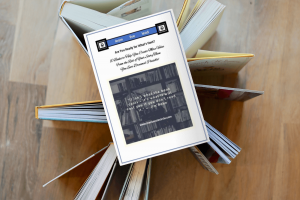One of my favorite roles when I worked in corporate management was mentoring young managers coming into the group. Being a part of setting them up for success was very rewarding. As a mentor, what we share is the result of proven experience. To mentor, you need to have succeeded and you need to have failed. It is the culmination of what worked and what didn’t and observations of all the “what when, why, where, and how’s” of good practices.
 That is still one of my favorite roles now as a life strategist and mentor. Whether we are talking about daily practices for our life or our business, many of the same principals apply. After all, what we are looking for are the best results we can achieve from the investment of our time, energy and other resources.
That is still one of my favorite roles now as a life strategist and mentor. Whether we are talking about daily practices for our life or our business, many of the same principals apply. After all, what we are looking for are the best results we can achieve from the investment of our time, energy and other resources.
There are five areas which are often over-looked that have made a significant difference for me in achieving my own goals. They are rate, recurrence, ratio, resilience and risk. In today’s post I am sharing with you why these matter and how to begin considering them when reviewing your own daily practices. These have been pivotal to me and changed my results every time.
Rate
The rate or pace at which we do something impacts the results. If we rush, we might be creating a higher risk of errors. If we go too slowly, we might potentially risk losing interest. And the rate can also affect results based on its affect on efficiency. For example, if I want to achieve my ideal weight one of the action goals I am going to set is for certain activities every day. Some of those need to be cardio activities that increase heart rate (safely) and cause my body’s furnace to operate at its peak. That means the rate (or pace) is very much a factor. Even walking that is the case. The effect of a leisurely stroll is far different from that of a power walk.
Recurrence
How regularly we do something is also a factor. Using our health example, if I don’t exercise with the right recurring schedule I diminish the value and get a poorer result than if the schedule is optimized. Recurring activities done properly are also what generate mastery. Remember that the majority of what we need to be able to do comes from skill, not talent. Talent might begin it but skill is what will determine the real quality of the end result in most cases. And skill comes from relentless repetition of doing it right.
Ratio
When we talk about ratios, we are talking about the power of the relationship between certain activities. All too often we neglect this and get discouraged when we don’t see the results we want from the work we are doing. The challenge is getting those ratios right for other activities. In our health example, the obvious ratio here would be between what we are eating vs. our activities. We have to have the ratio right to get the result. One influences the other without question. But there are other ratios as well. Determine what activities impact each other and optimize their ratios. When you do, you are optimizing your results as well.
Resilience
Nothing works every time all the time. It just doesn’t. There are always variables and influences that come into the picture. Our ability to be resilient and resume our daily practices is going to be major influencing factor in the ultimate success of our efforts. That is why every day matters. Each day we put ourselves back on the path to our ultimate success by the choices of that day. Whatever came before diminishes because of what we decide now. And whatever comes later is going to be the direct result of the latest decisions we’ve made.
Risk
One of the first questions we should ask when we set a new goal or objective is why we haven’t already achieved it. If I use the healthy weight example, the question would be “why am I not at a healthy weight now”. There is tremendous insight in this question because it helps us discover potential points of failure. Where are those risks? What steps can we take to eliminate or mitigate them? Being aware of potential threats is a vital part of our strategy. When we know where they are we can take steps to manage them. That becomes part of our questioning thread. For example, the question of why I am not healthy now would then prompt the next question of what I can do to remove that threat or obstacle going forward. In my personal story, it resulted in a massive clearing out of the pantry, refrigerator and freezer and continued monitoring of what I allowed to be there. Before we can eat healthy food we must have healthy food. Conversely, the best ways to stop eating unhealthy food is to not have it available. It sounds simple in theory (and it is) but it requires specific action to make it happen. That is the essence of managing risk.
Rate, recurrence, ratio, resilience and risk: Can you see where one or more of these might be where you need to shift your focus in order to change your results? Sometimes it helps to have another perspective when we look at these questions. Our laser strategy sessions are designed to help. Are you ready to get the results you’ve been missing? Let’s chat!







